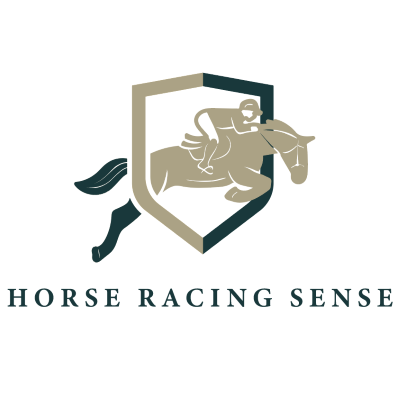Last updated: January 19, 2025
Whether your horse is racing, working, or grazing, their hooves are the foundation of their health and performance. Without proper care, hooves can weaken, leading to discomfort, injury, or even lameness—a scenario no horse owner wants to face.
Growing up around horses and with over 25 years of experience as a racehorse owner and trainer, I’ve seen firsthand how shoes can transform a horse’s well-being. They protect hooves on hard surfaces, aid recovery from injuries, and enhance overall hoof health, helping horses thrive in various conditions.
In this guide, I’ll explain why horses need shoes, when they’re necessary, and how to keep your horse’s hooves strong and sound. We’ll also explore barefoot management and practical hoof care tips, combining my experience with insights from trusted research to help you make informed decisions for your equine partner.
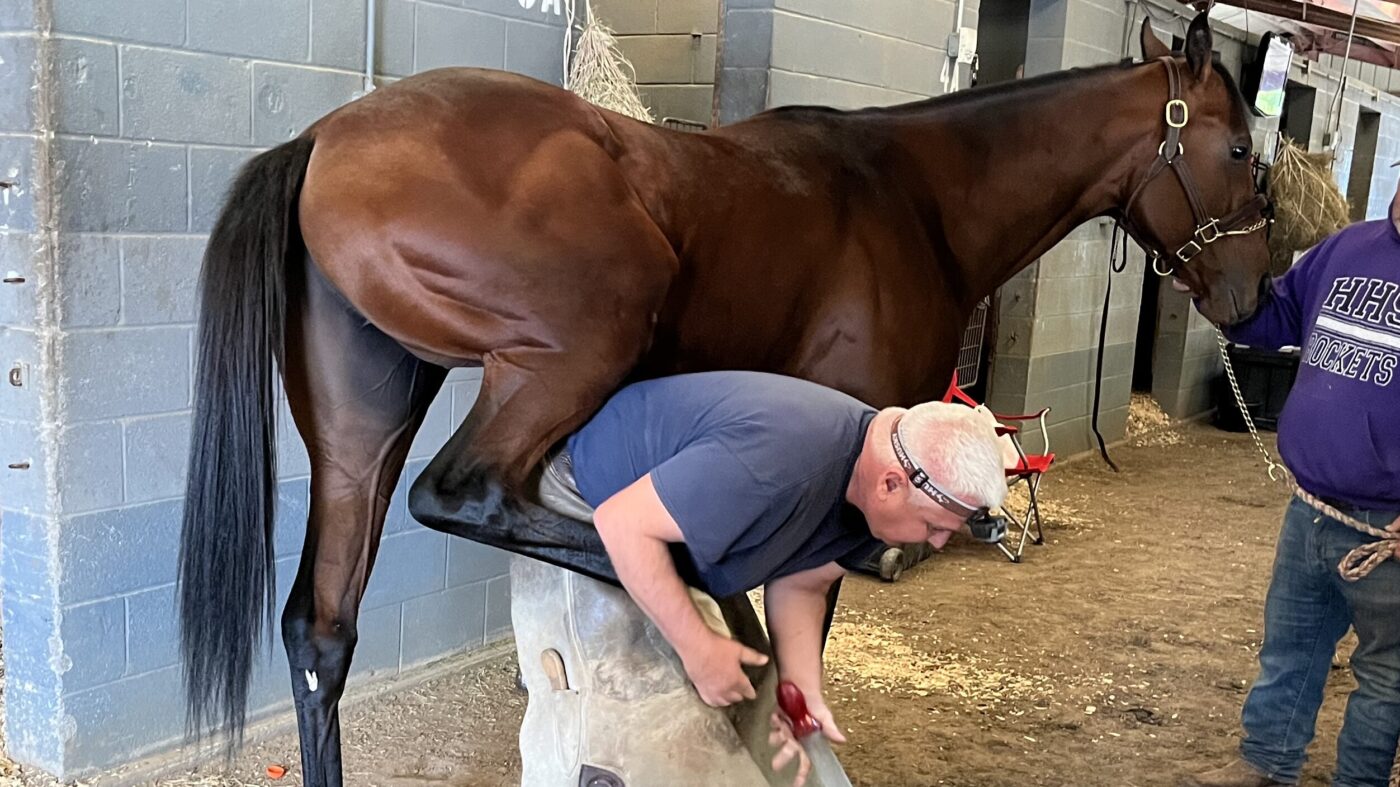
Understanding the Horse Hoof and How Shoes Interact
The horse’s hoof is a complex, weight-bearing structure essential for movement and overall health. Each component plays a vital role, and shoes interact with these parts to enhance their function.
The Hoof Wall
- The tough outer layer absorbs impact and protects internal structures.
- It bears the majority of the horse’s weight and provides a secure attachment point for shoes. Nails are driven into the insensitive part of the hoof wall to avoid discomfort, ensuring a secure fit.
- Shoes elevate the hoof, shielding the sensitive frog and sole from excessive strain.
- Maintenance Tip: Regular trimming prevents cracks and maintains balance, as noted by the University of Missouri Extension.

The White Line
- The fibrous junction where the hoof wall meets the sole provides stability and balance.
- It connects the hoof wall to the inner structures, including the coffin bone, through the sensitive laminae.
- Proper shoeing ensures the white line remains intact, preventing strain or issues like hoof wall separation.
The Sole
- The concave underside of the hoof distributes weight evenly and protects inner structures.
- Barefoot horses are more susceptible to bruising on hard or uneven terrain. Shoes often include pads or bar designs to provide extra protection for horses with thin soles.
Living in South Louisiana, where the humidity can be relentless, I’ve seen how wet paddocks can wreak havoc on hooves. After one particularly rainy season, my gelding developed thrush. Adding shoes with pads helped keep his hooves protected while we worked on drying out his environment.
The Frog
- This soft, V-shaped structure absorbs shock and pumps blood with each step, playing a critical role in circulation.
- Shoes protect the frog indirectly by elevating the hoof off the ground. Maintaining frog health is essential for overall hoof functionality, as emphasized by the Open Sanctuary Project.
Shoes interact with the hoof by acting as a protective barrier, supporting the hoof wall, and reducing strain on sensitive structures like the sole, frog, and white line. Now that we’ve explored the structure of the hoof, let’s look at how horseshoes interact with these components to support movement and joint health.
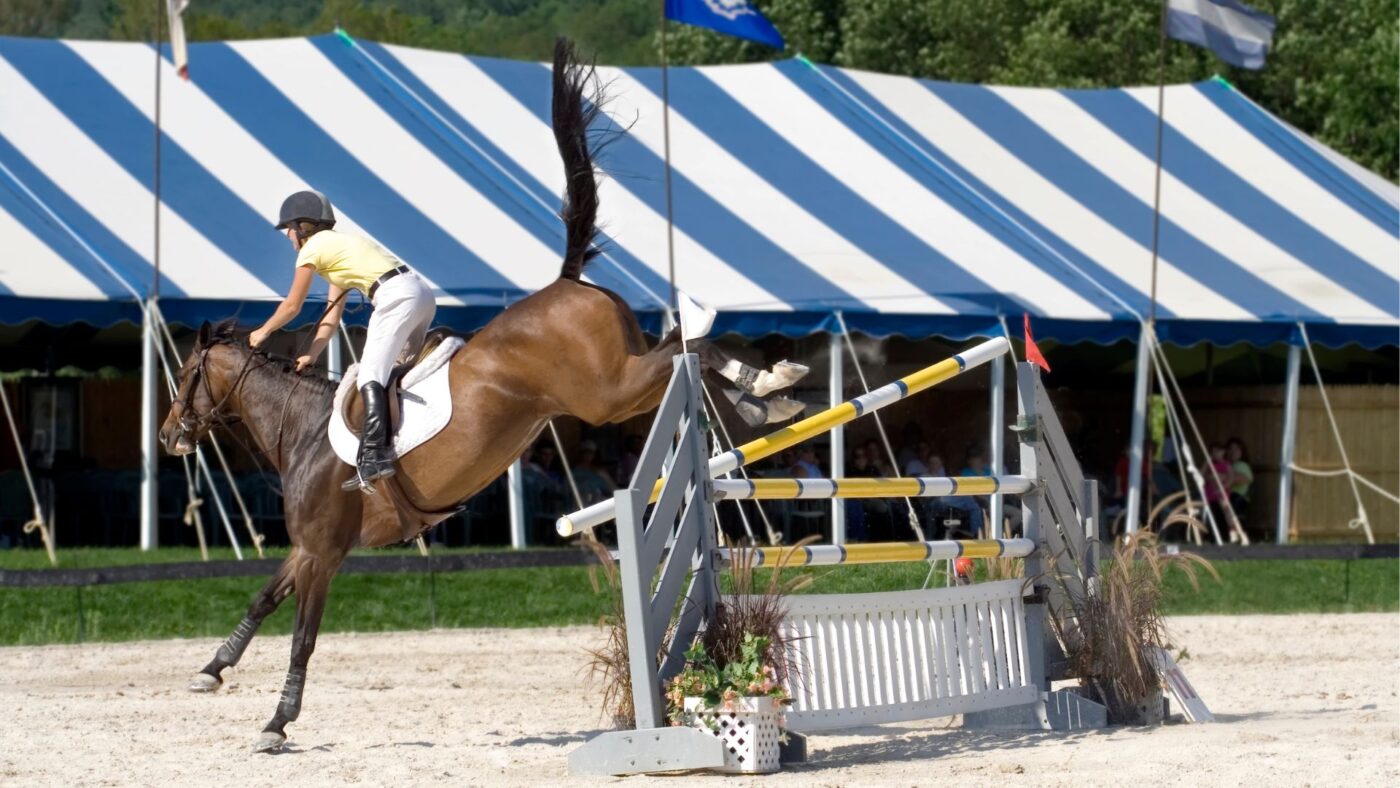
How Horseshoes Affect Hoof Movement and Joint Health
Horseshoes don’t just protect hooves; they influence how horses move and perform. By altering ground reaction forces (GRF) and joint angles, shoes reduce strain on sensitive structures, enhancing a horse’s comfort and performance in demanding conditions.
Reducing Joint Stress and Improving Weight Distribution
- Ground Reaction Forces (GRF): Shoes help redistribute the forces exerted by the ground during movement. According to the Journal of Equine Veterinary Science, shoeing reduces joint stress in high-impact activities like racing and jumping by optimizing how weight transfers from the heel to the toe during each step.
- Joint Angles: Shoes, such as wedges, adjust hoof alignment, improving the angles of the pastern, fetlock, and coffin joints. This reduces strain on tendons and ligaments, particularly for horses recovering from conditions like navicular disease or tendonitis.
Enhanced Shock Absorption for Performance Horses
Shoes act as a cushion, absorbing impact forces that travel up the leg during activities like jumping and galloping. Therapeutic shoes with pads provide additional shock absorption, especially for horses with sensitive or thin soles.
I saw firsthand how shoes can improve biomechanics with a filly in my barn. Despite her strong potential, she struggled with an uneven gait and frequent soreness during training. My farrier recommended wedge shoes to adjust her hoof angles. The difference was remarkable—her stride became smoother, and her performance improved, showing how the right shoes can optimize biomechanics and prevent discomfort.
By addressing how a horse bears weight and absorbs impact, shoes play a vital role in preventing injuries and enhancing performance. Consulting with an experienced farrier ensures the shoeing is tailored to meet your horse’s specific needs, improving both their biomechanics and overall well-being.

Why Do Horses Need Shoes?
Horseshoes serve several critical purposes depending on the horse’s environment, workload, and hoof health:
- Protection: One reason horses need shoes is to shield their hooves from wear and damage caused by hard or abrasive surfaces. Wonderopolis notes that horseshoes were historically developed to protect hooves in harsh conditions.
- Support: Shoes help distribute the horse’s weight more evenly, reducing strain on the hoof wall and internal structures.
- Shock Absorption: Shoes lessen the impact on joints and bones, especially during high-impact activities like jumping or racing.
- Performance Horses: Racehorses and other performance horses often require shoeing to withstand the demands of their work. Welfare concerns arise when improper shoeing or neglect contributes to hoof-related injuries, highlighting the importance of skilled farrier work.
- Traction: Specialized shoes improve grip on slippery or uneven surfaces, reducing the risk of injury.
- Corrective and Therapeutic Uses: Shoes address medical issues such as laminitis, navicular disease, or hoof imbalances. The Journal of Equine Veterinary Science highlights therapeutic shoeing’s role in alleviating pain and promoting healing.
Shoes are particularly beneficial for horses working on varied terrain or engaging in high-performance activities, like those discussed in my article on riding barefoot horses on roads. While shoes serve as protection and support for many horses, therapeutic shoes take this a step further by addressing specific hoof conditions.

Therapeutic Horseshoes: Healing and Preventing Hoof Issues
Therapeutic shoeing highlights why horses need shoes, offering targeted solutions for specific hoof problems.
- Pads: Offer extra cushioning and support for the sole, making them ideal for horses with thin soles or prone to bruising.
- Bar Shoes: Protect and support the heel or frog, redistributing weight to relieve pressure on affected areas.
- Heart Bar Shoes: These are particularly effective for conditions like laminitis, as they provide additional stability and redistribute weight away from sensitive areas.
One of my older horses developed laminitis after grazing too long in a lush pasture. My farrier applied heart bar shoes to help redistribute weight and relieve pressure on the affected areas. Combined with a modified diet and rest, he recovered well and returned to light riding. Therapeutic shoes are tailored to the horse’s unique condition, and collaborating with a skilled farrier ensures optimal results.
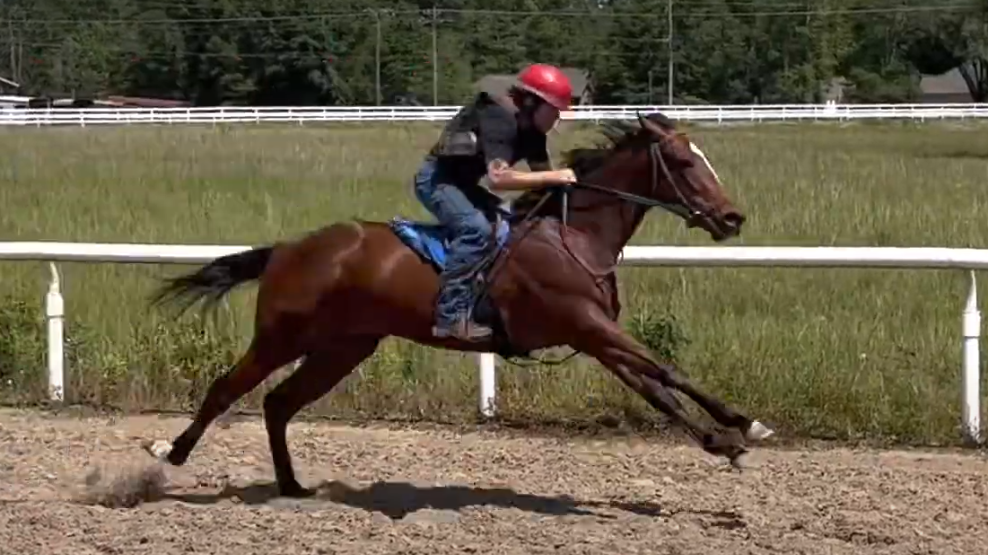
Should Your Horse Go Barefoot? Benefits and Challenges
Not every horse requires shoes. Deciding between barefoot and shod often depends on factors like workload, environment, individual hoof structure, and even owner preference. Understanding the benefits and challenges of each approach can help you make the best choice for your horse.
The Benefits of Barefoot Horses
- Barefoot hooves naturally flex and expand, promoting better blood flow and shock absorption. Wild horses remain barefoot because their hooves wear down naturally in balance with growth. As noted by AnimalSmart, their environment supports this process.
- Shoes restrict this natural movement, potentially affecting circulation and shock absorption.
Challenges of Barefoot Management
- Domesticated horses often face challenges:
- Softer pastures can cause hooves to grow too long.
- Hard or rocky terrain may lead to excessive wear.
- Horses with high workloads or conformational issues often require shoes to avoid injury. Shoes provide added support on surfaces that might bruise or damage the hoof.
For more on this topic, see my article on why wild horses don’t need shoes.
Deciding whether to shoe or go barefoot is just one part of hoof care; ensuring proper shoeing practices is equally crucial for your horse’s well-being.
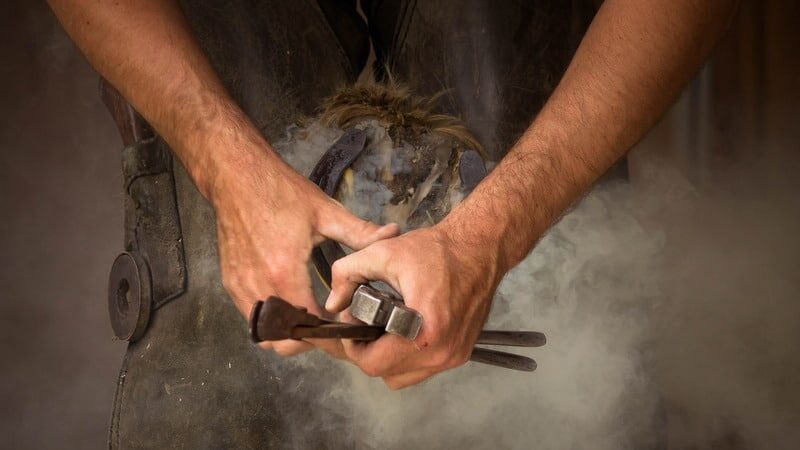
Protecting Horse Welfare Through Proper Shoeing Practices
Shoeing plays a crucial role in a horse’s overall well-being, but improper shoeing can lead to significant welfare concerns. Here’s why getting it right matters:
Risks of Incorrect Shoeing
- Lameness and Chronic Pain: Using the wrong type of shoe or failing to maintain proper hoof balance can cause undue stress on tendons, ligaments, and joints, leading to long-term lameness. For example, shoes that are too small or poorly fitted can compress the hoof and cause discomfort with every step.
- Hoof Damage: Nails placed incorrectly during shoeing may damage sensitive internal structures. This is particularly risky when inexperienced farriers or do-it-yourself methods are employed.
- Performance Decline: Horses working in demanding conditions without appropriate traction may slip or strain, leading to injuries.
The Role of Professional Farriers
A skilled farrier is essential to preventing these issues. Their expertise ensures:
- Correct Shoe Selection: Farriers assess a horse’s workload, conformation, and any pre-existing conditions to choose the right shoe. For example, therapeutic shoes may be necessary for horses with navicular disease or laminitis.
- Balanced Hoof Trimming: Regular trims maintain proper hoof balance, reducing the risk of strain or uneven wear.
- Tailored Adjustments: In cases of injury, farriers can work alongside veterinarians to design specialized shoeing solutions that promote healing and reduce pain.
One of my racehorses struggled with recurring soreness after races. After consulting with my farrier, we switched her to lightweight aluminum racing plates with pads for added cushioning. Her performance improved, and the soreness resolved, proving how the right shoeing can protect a horse’s welfare and extend its career.
Shoeing as a Preventative Measure
Shoes are more than just tools for performance; they’re vital for preventing avoidable injuries and promoting a horse’s long-term health. A knowledgeable farrier ensures each shoeing decision aligns with your horse’s specific needs, safeguarding both their comfort and welfare.
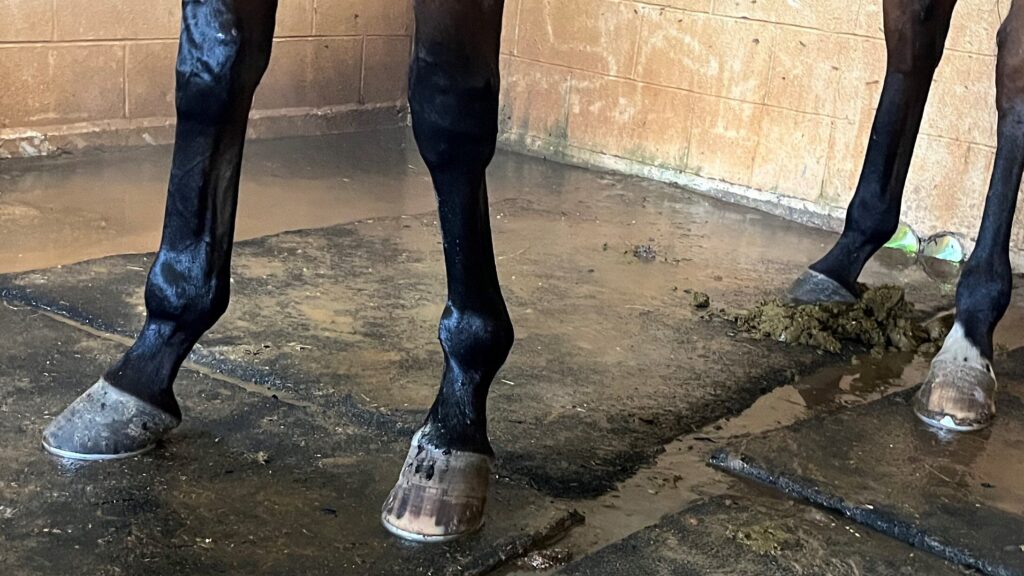
Finding the Right Horseshoes for Your Horse’s Needs
Choosing the best horseshoes involves understanding your horse’s specific needs, whether for racing, trail riding, or therapeutic support. Here are the most common types of horseshoes and their applications:
- Racing Shoes:
Lightweight aluminum shoes are designed to maximize speed by reducing the weight carried by a horse. These are commonly used for racehorses, where every ounce counts in performance. However, some horses can race successfully without shoes, depending on the condition of their hooves and the type of surface they’re racing on. Learn more about this in my article on racing without shoes. - Steel Shoes:
Known for their durability, steel shoes are ideal for horses performing heavy workloads, such as pulling, working on hard surfaces, or trail riding. They provide excellent wear resistance and long-lasting protection. - Therapeutic Shoes:
Specialized designs alleviate pain and correct hoof issues. Examples include:- Pads or Bar Shoes: Provide extra protection for horses with thin soles by reducing pressure on sensitive areas.
- Heart Bar Shoes: Offer targeted support for conditions like laminitis by redistributing weight and reducing strain on the affected area. These therapeutic options are particularly useful for horses recovering from injuries or dealing with chronic hoof conditions.
- Rubber and Plastic Shoes:
Provide cushioning and are often used for horses with specific conditions or on hard surfaces. - Jumping Shoes:
Equipped with studs or calks to improve grip during takeoff and landing, helping horses maintain stability during high-impact movements. Proper traction is crucial to ensure safety and performance in show jumping or eventing disciplines.
Each type of shoe is tailored to the horse’s specific needs, from speed and performance to protection and rehabilitation. Working with a skilled farrier ensures the right choice for your horse’s discipline and hoof health. For additional insights into hoof care and common problems, visit my article on foot problems in horses.
Proven Hoof Care Tips for Every Horse: Shod or Barefoot.
Whether your horse is shod or barefoot, consistent care is critical:
- Diet: Nutrients like biotin, zinc, and methionine support strong hoof growth. For dietary guidance, see my article on hoof nutrition for healthy hooves.
- Hygiene: Clean and dry hooves help prevent infections like thrush. Our daily grooming routine includes checking each horse’s feet to ensure they are clean and healthy. Most of the time, we pick them out to thoroughly check for early signs of thrush and other issues.
- Exercise: Regular movement promotes circulation and strengthens hooves.
- Trimming: Hooves grow continuously and require trimming every 4–6 weeks to prevent overgrowth, imbalance, or cracks, whether the horse is barefoot or shod.
For more tips on proper hoof care and addressing common issues, visit my article on hoof pain in horses.

FAQs on Horse Shoeing and Hoof Care
Wondering how to care for your horse’s hooves or decide between shoes and barefoot? These FAQs address the most common concerns horse owners face.
Does Shoeing Hurt the Horse?
When done correctly, shoeing does not hurt the horse. The outer wall of a horse’s hoof, where the shoe is nailed, is made of keratin and doesn’t have nerves, similar to our fingernails. However, care must be taken to avoid ‘quicking,’ which occurs if a nail accidentally hits the sensitive inner part of the hoof.
Is it better for a horse to be barefoot or shod?
This depends on your horse’s needs. Barefoot horses benefit from natural movement, but shoes provide extra protection for performance or medical needs. (Shoes vs. Barefoot—Answers to Common Questions)
How Often Do Horses Need New Shoes?
Horses typically need new shoes every 6 to 8 weeks. However, this can vary depending on the horse’s level of activity and the type of terrain they frequently walk on. Regular visits from a farrier are essential to assess and replace horseshoes as needed. (Proper Basic Hoof Care)
What are signs of improper shoe fit?
Common signs that a horse’s shoes don’t fit properly include:
Stumbling and/or lameness
Unusual hoof wear patterns
Visible discomfort during movement
What can I do to improve my horse’s hoof health?
A balanced diet is critical. Nutrients like biotin, zinc, and methionine support strong hooves. Regular trims, hygiene, and exercise also contribute. Learn more in my hoof supplements guide.
How can I find a reliable farrier?
Look for certifications from the American Farrier’s Association and seek recommendations from other horse owners.
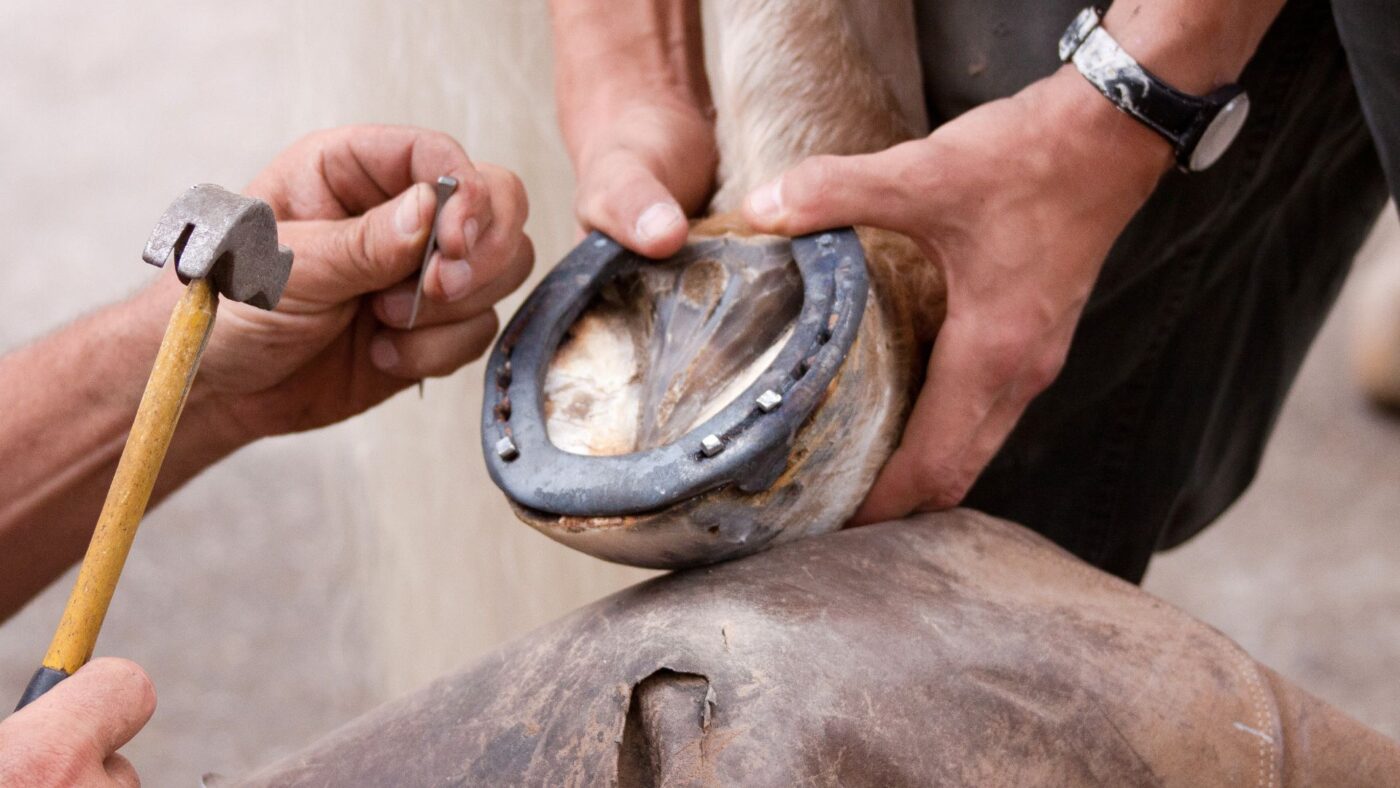
Conclusion: Why Do Horses Need Shoes?
It’s clear why horses need shoes: they provide protection, support, shock absorption, and even therapeutic uses. Whether your horse is barefoot or shod, maintaining healthy hooves through regular care, a balanced diet, and professional farrier services is essential. Healthy hooves are the foundation of a happy, high-performing horse.
Keep your horse’s hooves in top shape by consulting a professional farrier and following a consistent care schedule. Have questions or experiences to share? Let me know in the comments below!
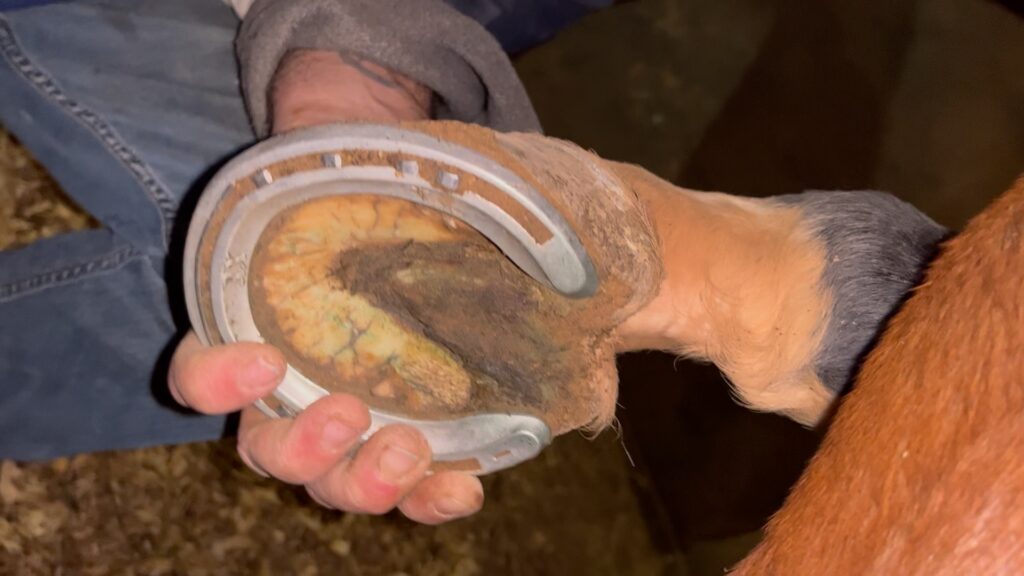
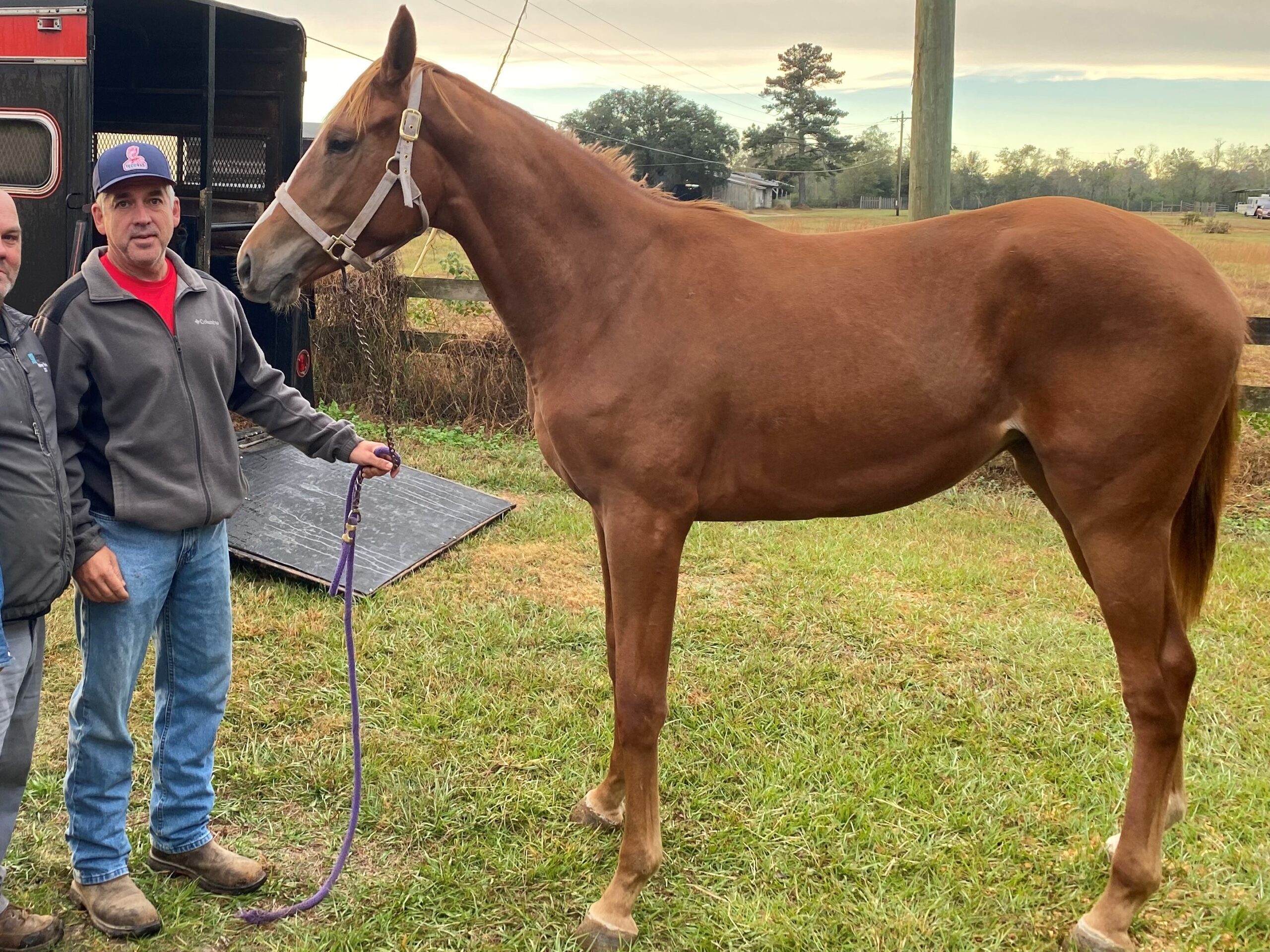
About the Author: Miles Henry
Lifelong Horseman | Racehorse Owner | Published Author
Miles Henry brings over 25 years of hands-on experience training and owning Thoroughbred racehorses. Raised with Quarter Horses and Appaloosas, he’s spent a lifetime learning from horses—on the track, in the barn, and in the field. Today, he runs a small but successful racing stable in Louisiana and shares real-world insights on HorseRacingSense.com, helping horse owners, fans, and bettors navigate the sport with confidence.
📚 Books: View Miles’s books on Amazon »
🎧 Podcast Guest: Animal Tales Ep. 32 |
YouTube Interview
📩 Newsletter: Sign up for racing tips and horse care advice »
🔗 Follow Miles:
Twitter |
Facebook |
YouTube
